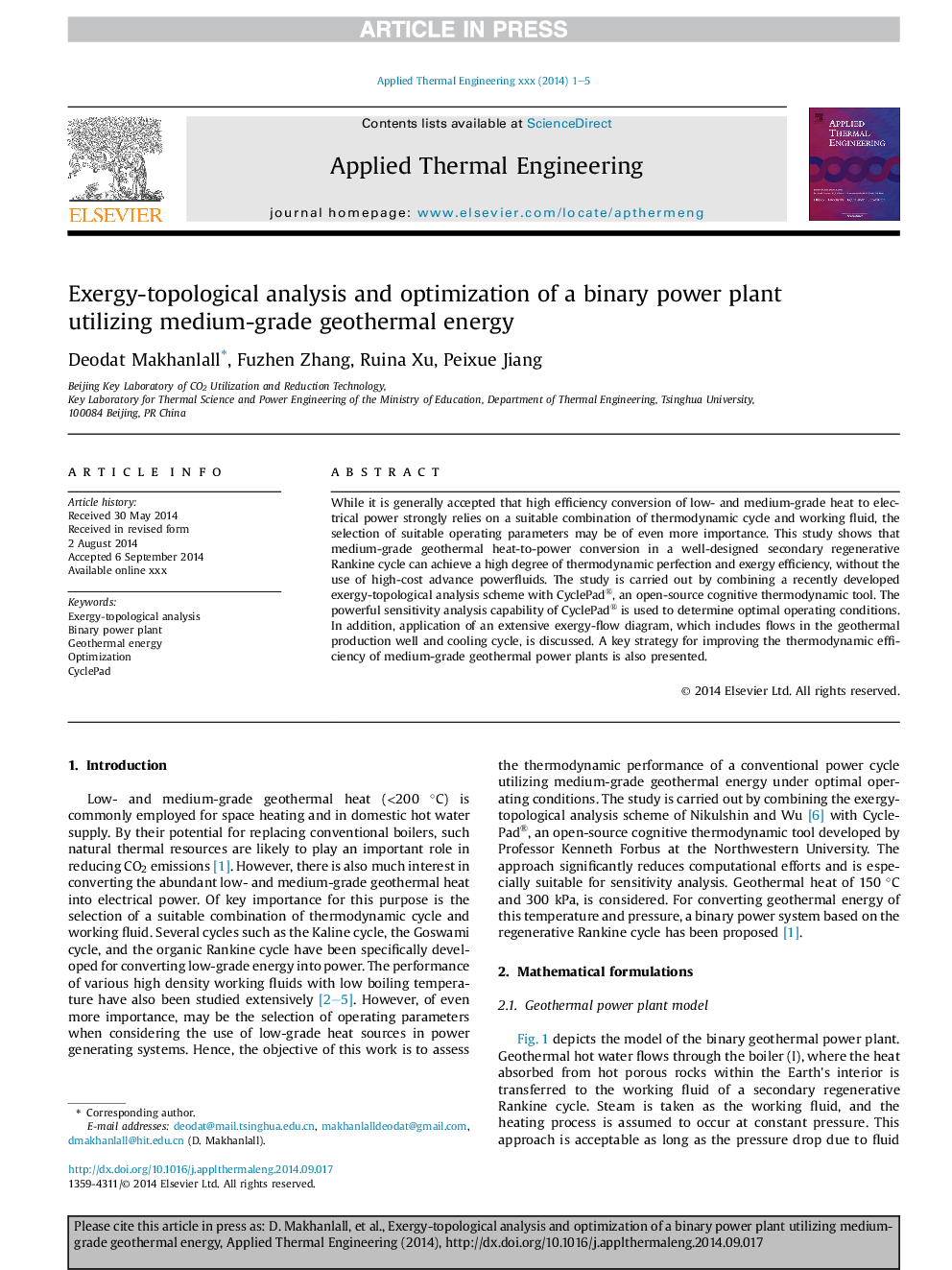| Article ID | Journal | Published Year | Pages | File Type |
|---|---|---|---|---|
| 645334 | Applied Thermal Engineering | 2015 | 5 Pages |
Abstract
While it is generally accepted that high efficiency conversion of low- and medium-grade heat to electrical power strongly relies on a suitable combination of thermodynamic cycle and working fluid, the selection of suitable operating parameters may be of even more importance. This study shows that medium-grade geothermal heat-to-power conversion in a well-designed secondary regenerative Rankine cycle can achieve a high degree of thermodynamic perfection and exergy efficiency, without the use of high-cost advance powerfluids. The study is carried out by combining a recently developed exergy-topological analysis scheme with CyclePad®, an open-source cognitive thermodynamic tool. The powerful sensitivity analysis capability of CyclePad® is used to determine optimal operating conditions. In addition, application of an extensive exergy-flow diagram, which includes flows in the geothermal production well and cooling cycle, is discussed. A key strategy for improving the thermodynamic efficiency of medium-grade geothermal power plants is also presented.
Related Topics
Physical Sciences and Engineering
Chemical Engineering
Fluid Flow and Transfer Processes
Authors
Deodat Makhanlall, Fuzhen Zhang, Ruina Xu, Peixue Jiang,
